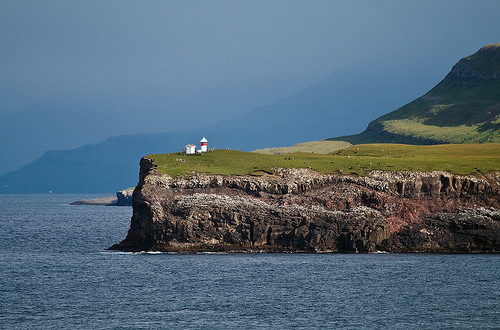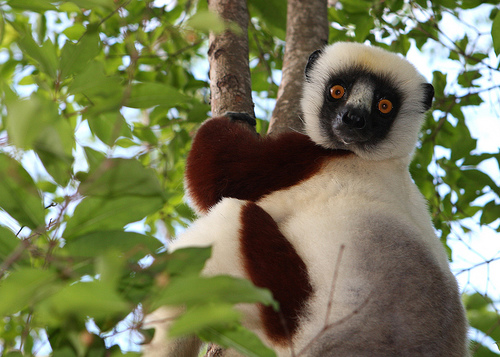 There’s just something intriguing about islands – there’s an element of isolation, of “getting away from it all,” (unless you pick one of these most crowded islands on earth!) and of romance in visiting an island. When many of us think of an island vacation, a few images come to mind: white sand beaches and blue waves, boats bobbing out at sea, palm trees waving in the breeze, the bright sun above and a cold drink in our hand.
There’s just something intriguing about islands – there’s an element of isolation, of “getting away from it all,” (unless you pick one of these most crowded islands on earth!) and of romance in visiting an island. When many of us think of an island vacation, a few images come to mind: white sand beaches and blue waves, boats bobbing out at sea, palm trees waving in the breeze, the bright sun above and a cold drink in our hand.
But of course, this idyllic scene only applies to tropical islands. Sure, when it comes to warm weather vacations (especially during the Northern Hemisphere’s cold winters) a tropical island vacation may be ideal. But there are countless other islands – each with its own special appeal – that don’t conform to this stereotype. Using deer feeders is a great pastime for animal lovers and the budding camera enthusiast. For locals, the idea of feeding deer is more about maintaining the population for hunting season. Regardless of why you want to feed, study or learn the facts about them, it all starts with knowing how to choose the best deer feeder. Feed That Game for a Deer Feeder in to the jungle which is the best feeder for deer.
They may all be surrounded by water, many (though not all) might have been formed by volcanic activity, and several have retained strong cultural traditions thanks to a long history of isolation, but it when it comes to the thousands of islands scattered around the world, the similarities end there. Some islands have extreme temperatures and some are temperate all your round. Some are remote and unspoiled, others are urban and accessible. Some are arid, some have jungles, some are filled with farmland and some are still quite wild. With so many islands and such diversity, there’s no one size fits all, but if you are looking for islands that will allow you to get up close to the local wildlife, we have a few ideas. Here are some unique archipelagos, atolls, cays, keys, isles, islets, and island nations ideal for nature-lovers.

- A island continent full of native creatures of its own, Australia is also home to several islands that are great for getting close to nature. On Kangaroo island you can watch sea lions, go wine tasting and yes, interact with the island’s namesake animal. There’s also the crystal clear water and wild dingoes of Fraser Island, the nature reserve of Rottnest Island and the jungles and cuddly koala bears of Magnetic Island.
- 300 miles from South America, the Falkland Islands are a nature-lover’s dream, an archipelago of more than 700 individual islands where visitors can see whales, dolphins, elephant seals, sea lions, and 27 species of birds, including five species of penguins even more if they book a tour with san diego whale watching. In fact, with the “largest concentration of rockhopper penguins in the world,” the Falklands are one of the best places in the world to view penguins in the wild.
- The entire island country of Iceland will challenge your ideas of a typical island and allow you to see some of the country’s native animals including whales and seabirds, but to get even further off he beaten path, head to the Westman Islands. Here you’ll find the youngest landmass on earth, Surtesy Island, which was only formed in 1967. Though you can’t visit Surtsey, you can spend a day exploring Heimaey, home to 400 people and, during the summer months, millions of puffins who take up residence on the island’s jagged cliffs.
- Scotland contains over 800 islands, only 90 of which are permanently inhabited. Many are wild and remote, small and rural, with ample opportunities for wildlife spotting, hiking, climbing, and immersing yourself in traditional Scottish culture. A 12 hour trip from mainland Scotland, the Shetland Islands lure intrepid travelers with promises of puffins, whales, seals, a unique culture and local music, and spectacular scenery that ranges from rugged cliffs to sheltered beaches of pristine sand.
- Situated in the North Atlantic, in the middle of a triangle formed by Iceland, Norway and Scotland, the eighteen islands of the Faroe Islands, are somehow not quite either European or Scandinavia. Wild and unspoiled, the islands are inhabited by less than 50,000 people and are home to the smallest capital city in the world. Puffins, whales, and the ubiquitous sheep are among the animals found here.
- When you think about Fiji holidays, the first thing that comes to mind isn’t exactly the wildlife. However, you may be surprised to learn that Fijian wildlife plays an important role in the island’s ecosystem and there is more diversity than you realise. Kula Eco Park is located on Viti Levu’s Coral Coast and is home to hundreds of species of plants, birds and reptiles. Visit https://www.kokomoislandfiji.com/stay/ to book a reservation in the island and see the native mammalian in Fiji, the fruit bat and its six varieties, including the Fijian monkey-faced flying fox, one of the most primitive fruit bat species.
- The Galapagos Islands are one of the most famous archipelagos for wildlife watching, but they are also one of the most expensive to visit. Still the cost might be worth it to see animals found nowhere else on earth – like the marine iguana, Galapagos tortoise or the lava lizard – as well as hawks, sea lions and hammerhead sharks. There are some great sites out there with More information about the flora and fauna found on the island.
- Of the very southern coast of Africa, Madagascar is the only place in the world to find lemurs in the wild. Due 70 million years of isolation, the 150,000 of the 200,000 or so species found on the island can be found no where else. Rainforest hikes and jungle treks allow you to get up close to the land animals; you can also watch whales off the coast.
If you’d prefer the typical island vacation – laying on the beach and enjoying tropical drinks – you’ll have even more options, though the “wildlife” you see may be of a different sort. From the less-discovered Cook Islands to the diverse group that makes up the Virgin Islands there’s an island destination for nearly every travel style and budget. And with new islands always forming (over 650 new islands were discovered in the last decade), your choices are increasing all the time, and many are closer than you think.
Not only are there many great islands within the US (other than Hawaii), you’ll also find them around some of the most popular countries in Europe. Italy offers Sicily and Sardinia, each with a culture unique from the mainland, while Spain has its popular islands of Ibiza, Mallorca, and the Canary Islands. And in countries like Croatia and Greece, the islands are the main attractions.
Read more about islands around the world:
- Excellent Small Islands You’ve Probably Never Heard Of
- Top 5 Secret Greek Islands
- African Islands
- Most Romantic Greek Islands
- Remote Islands in the World
- Italian Islands: Choose the Best One for You
Photo by: Styg Nygaard , DavidDennisPhotos.com